An air purifier or air scrubber can be an important part of keeping the air quality in your home fresh and healthy. These amazing home devices can transform stale, particle-filled air into clean, breathable air.
But what exactly is an air scrubber or air purifier?
An air purifier is the basic foundation to quality air. It improves your health by taking away the particles you don’t want to breathe in your system.
A step-up of air purifiers are commercial devices like the “Air Scrubber.” This specialty air purifier moves a lot of air through it, making it efficient in purifying air in a short amount of time. However, these devices can also be quite loud and not very appealing to look at.
To help you be well-equipped for home air quality, we’ll take a look at what you need to know about getting the most out of these key home devices. We’ll share what they are and how you can choose the right option for you and your environment.
Air Purifier
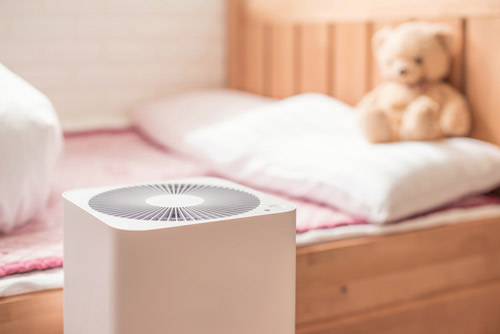
Let’s start with the basic building block of indoor air quality: an air purifier.
When we talk about an air purifier, we’re describing a device that blows air over a filter media of some type. This typically involves a fan and a filter media.
The filter media can be anything from a washable filter that captures almost nothing to a MERV 8 to MERV 13 furnace filter which captures a decent amount of particulate matter, all the way to a HEPA filter that captures 99.97% or more of particles.
Filter medias can also include molecular filter medias such as activated carbon. Activated carbon, also known as activated charcoal, is processed to have small, low-volume pores which help to remove chemicals like VOCs, toxic gases, and even smells from the air.
When you put a HEPA filter and activated carbon together, you have a respirator capable of filtering most toxic matter out of the air. Add some impregnated molecules like metal salts or amines to the activated carbon and you have a military gas mask capable of filtering everything from nuclear fallout to biological and chemical weapons.
This alone should tell you how powerful air filters can be if they are built correctly.
Fortunately, the actual building blocks of a quality air purifier are quite cheap.
To show how simple it is to build an air purifier that makes a significant change in particle count, here is a picture of the air purifier running in my kitchen right now:

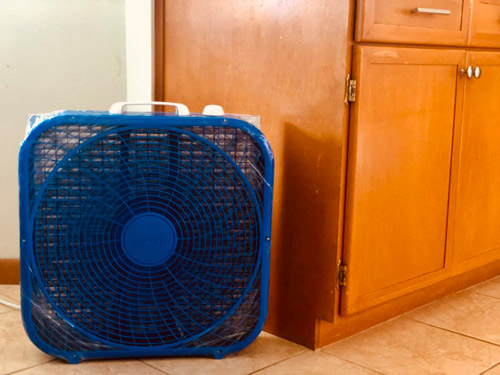
This very inexpensive filter brings particulate matter (PM) of 2.5 microns in our house down from an already low 12 µg per cubic meter to 6 µg per cubic meter.
I’m blessed with very sensitive lungs. I have terrible allergies and frequently wheeze when exposed to pets, dander, pollen, and just about everything that exists in the air.
But with proper air filtration, even a furnace filter taped to a box fan, I can somehow live with three cats and have basically no ill side-effects.
Air filtration works.
What Does An Air Scrubber Do?

The term “air scrubber” means the same thing as an air purifier, except “air scrubber” is the term used for the more commercial versions that look like construction equipment.
These air scrubbers are used in commercial settings where HEPA filtration is necessary to completely clean the air of any toxins, viruses, and particulate matter.

Two examples of this are:
- Construction sites – large amounts in particulate matter are being created from sawing, demolition, and more.
- Hospitals – isolation rooms require negative air pressure, with 100% of output air being cleansed of viruses and pathogens from the air in the isolation room
The main difference between an air scrubber and a residential air purifier is that the air scrubber is made for commercial settings. It’s all business. The look and sound of it does not matter.
These air scrubbers are built to be very durable and have very high airflow rates measured in Cubic Feet Per Minute (CFM) or Cubic Meters Per Hour (m3/h). The downside is they’re not very pretty, they use a lot of electricity, and they make a lot of noise.
Best HVAC Air Scrubber
Not looking to filter one room while you demolish walls? Maybe you’re more interested in whole-house air filtration.
I feel you. This is my thing too.
Before blowing all your money on fancy tech, start with your existing system. Change your furnace filter regularly. And more importantly, use a high MERV filter. This means a MERV 11 filter at minimum. If the fan in your HVAC system can handle a more restrictive filter, go with a MERV 12 or a MERV 13 filter instead.
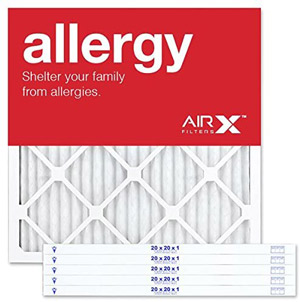
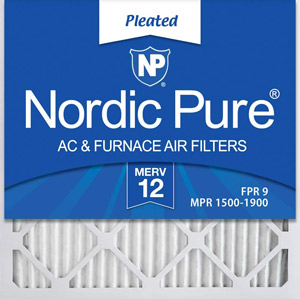
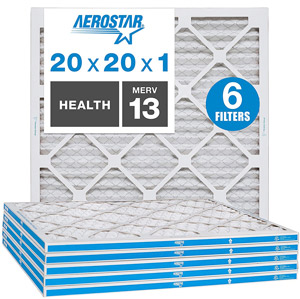
There are other great HVAC Air Scrubber options, but personally I wouldn’t bother with any of them.
This includes UV lights, ionizers, Photocatalytic oxidation (PCO), or photoelectrochemical oxidation (PECO).
The problem with the UV light is it generally doesn’t have enough exposure time to actually kill most of the particles in the air. Air is simply flowing past it too quickly.
If the system is sized properly, it becomes very expensive, including the ongoing electricity cost and yearly UV bulb changes. At the end of all this hassle, the product doesn’t actually filter anything. At its best, it kills the microorganisms and leaves them floating around to be inhaled later.
As for ionizers, most of them produce ozone. Ozone is a colorless unstable toxic gas that you don’t want to be breathing in. Anything that produces ozone should be avoided.
Photocatalytic oxidation (PCO) and photoelectrochemical oxidation (PECO) both act similarly to UV lights. According to the Wikipedia entry, “(PCO) uses short-wave ultraviolet light (UVC), commonly used for sterilization, to energize the catalyst (usually titanium dioxide (TiO2)) and oxidize bacteria and viruses…PCO is not a filtering technology, as it does not trap or remove particles…Photocatalytic Oxidation systems often have high commercial costs.”
If you want the best air quality money can buy, then install a whole house HEPA filter in the HVAC system. But, I should warn you, it can be pretty expensive.
There are other things you can do first before purchasing a whole house HEPA HVAC system that can make a huge improvement to your home air quality. These steps include things such as:
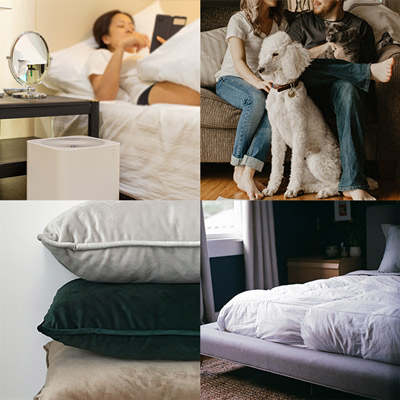
- Keeping pets out of the bedroom at night.
- If you have pets, putting a sheet over the bed during the day to keep dander off your pillows and blankets.
- Buying some pillow covers.
- Buying a mattress cover.
- Buying a HEPA air purifier and putting it near the head of your bed.
- Buying a HEPA Vacuum.
Portable Air Scrubber
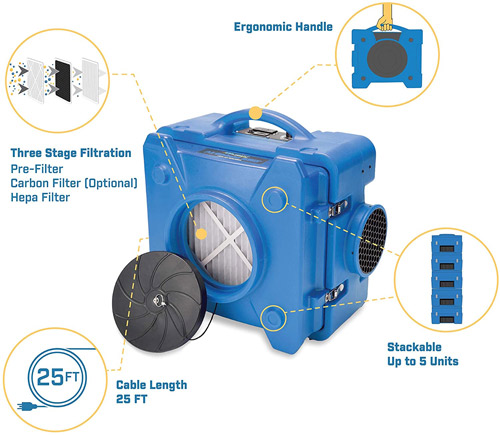
A portable air scrubber is basically a portable air purifier used in commercial settings. It includes a HEPA filter and a pre-filter to extend the life of the HEPA filter. Optionally these units will contain activated carbon to remove gases and other molecular toxins.
These can be rented for ~$300. Or, you can purchase one for around $550.
One of these units with activated carbon included is as good as it gets for air filtration.
The only downside is noise.
Keep in mind that only the air that goes through the system is filtered. But honestly, with 500+ CFM of airflow, you can filter 700 square foot space 5 times per hour. For residential purposes, this is more than enough.
What is the NASA Air Scrubber and Air Scrubber Plus?

The Air Scrubber Plus is a commercial air scrubber made by Aerus. However, there’s some confusion about this air scrubber being endorsed by NASA.
First off, NASA is not in the business of endorsing commercial products. Second, the original air scrubber used by NASA was meant to remove ethylene gas from the air in order to assist hydroponics (in this case, growing plants in space).
The Air Scrubber Plus is very loosely based off this original technology. But let’s face it, humans are not bananas that need to be kept from ripening.
This commercial product is most likely a Photocatalytic Oxidation (PCO) device. I say “most likely” because all the product documentation uses trademarked terms and nonsensical jargon meant to confuse and intimidate.
The only clue I have about its inner workings is that the spec sheet says “Advanced Active PCO Technology.”
At best this makes the product equal to a UV light, which will destroy pathogens if it’s allowed to be exposed to them for a long enough period of time. I’m not even certain that the product is at that level though, since it’s shrouded in a lot of marketing terminology.
And that brings me to a good point. The old adage is true: “If you don’t understand it, don’t give it your money.”
Popular Articles on ComproGear
Super Plus Size Compression Stockings Wearing a Different Pair Weekly
Are Air Scrubbers Dangerous?

If this branded product produces ozone, that can be dangerous. If it doesn’t produce ozone, then it’s most likely not dangerous.
However, photocatalytic oxidation (PCO) has been known to produce toxic byproducts, mainly formaldehyde. Researcher Fariborz Haghighat stated it clearly enough: “We were shocked that some of the gases to come through the system are more dangerous than the original gas.”
Rather than focus on an overpriced PCO light that potentially emits toxic byproducts, I’d like to focus on technologies that we know for sure are effective and safe. These are HEPA Filters and Activated Carbon.
Does the Air Scrubber Really Work?
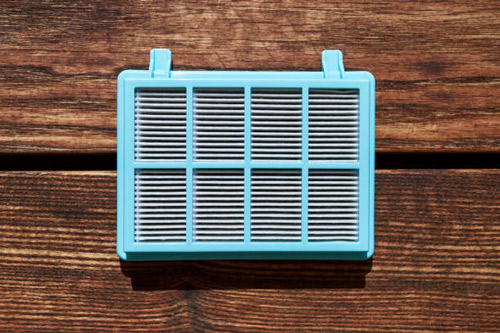
As for the branded air scrubber, I’m not entirely certain. It might kill viruses and bacteria. But in a real situation where viruses or bacteria are seriously present, I’d personally stick to HEPA filters, source control, and negative pressure in the area where viruses and bacteria are being produced. This is primarily what hospitals do.
Does the traditional HEPA Air Scrubber work? Yes. It’s highly effective, filtering 99.97% of particles at the 0.3 µm level, which is the most difficult particle size to filter. This filtration includes everything from pet dander to mold to deadly viruses. If air passes through a legitimate HEPA filter, you can bet it’s clean. The downside is that only the air passing through the filters is cleaned.
Are Air Scrubbers Worth The Money?

Your average commercial air scrubber machine with a pre-filter, HEPA filter, and possibly even a carbon filter, is around $550. These can be rented for around $300.
The branded Air Scrubber Plus PCO machine is, interestingly enough, also $550.
If you’re looking for better indoor air quality and removal of viruses, bacteria, mold, pollen, and dander, stick to an air scrubber with a HEPA filter. If you need to filter at the molecular level, for things like VOCs and Paint Fumes, make sure to get a unit with an activated carbon filter as well.
Keep in mind that a commercial air scrubber can be very loud. This is fine for a construction site, but not appropriate for home use. Realistically, it simply won’t get used at high enough airflow settings to justify the price.
For most residential applications, it’s better to own several quieter and cheaper units than one industrial-strength piece of factory equipment.
Use this guide to help inform your decision as to what type of air filter is a best fit for you and your lifestyle.
This page last updated December 15, 2022